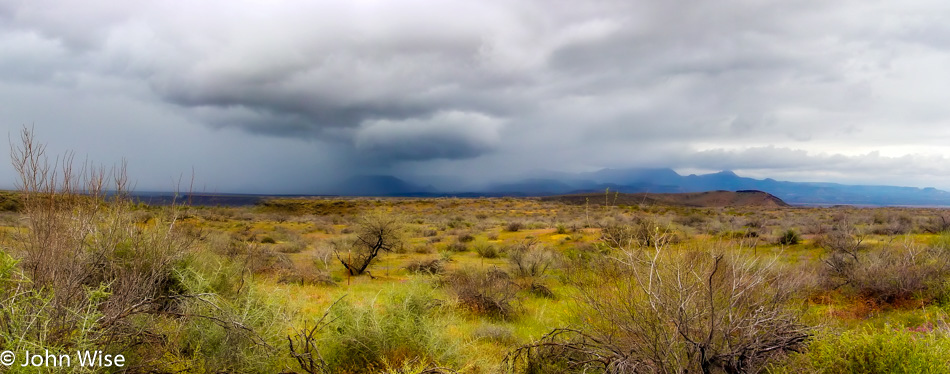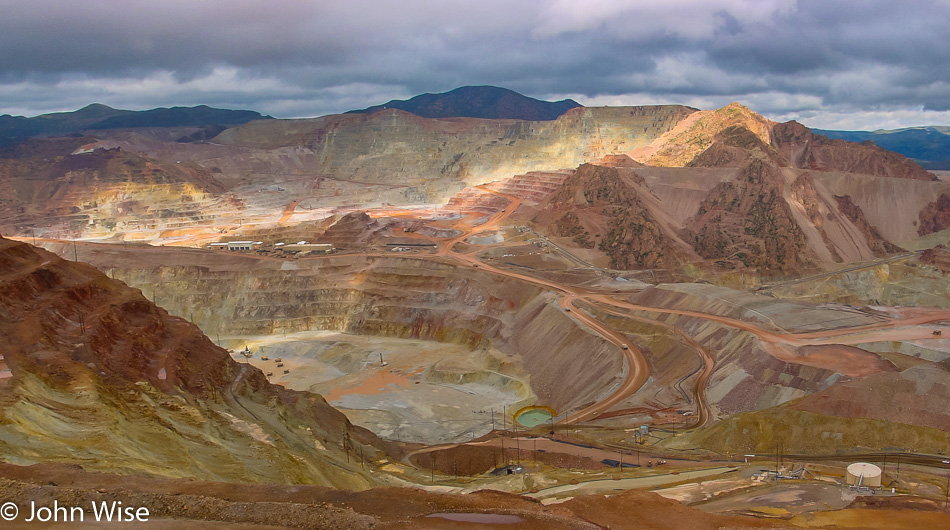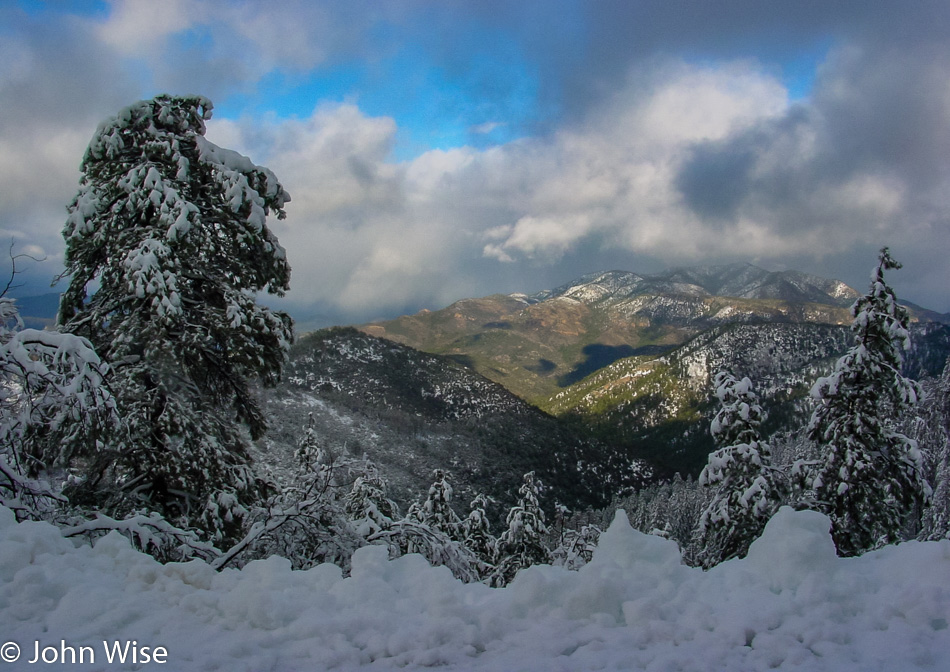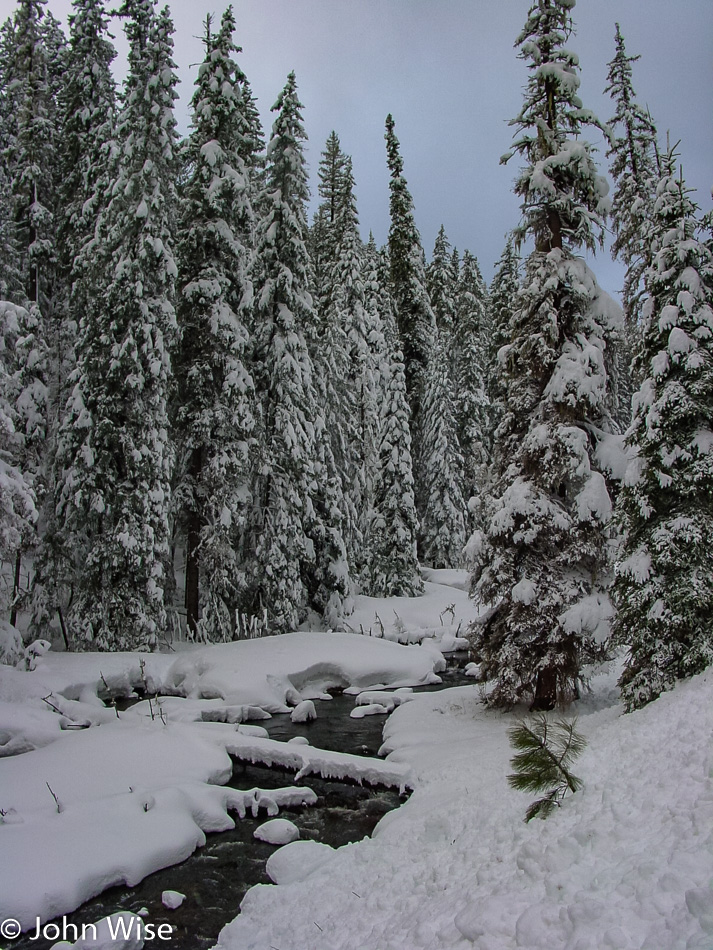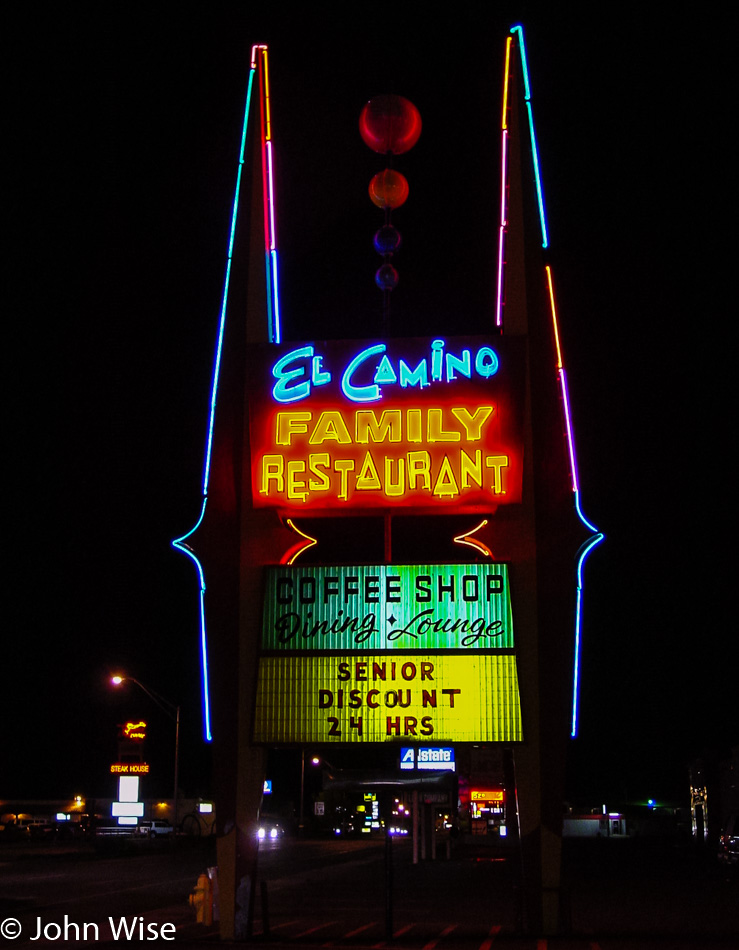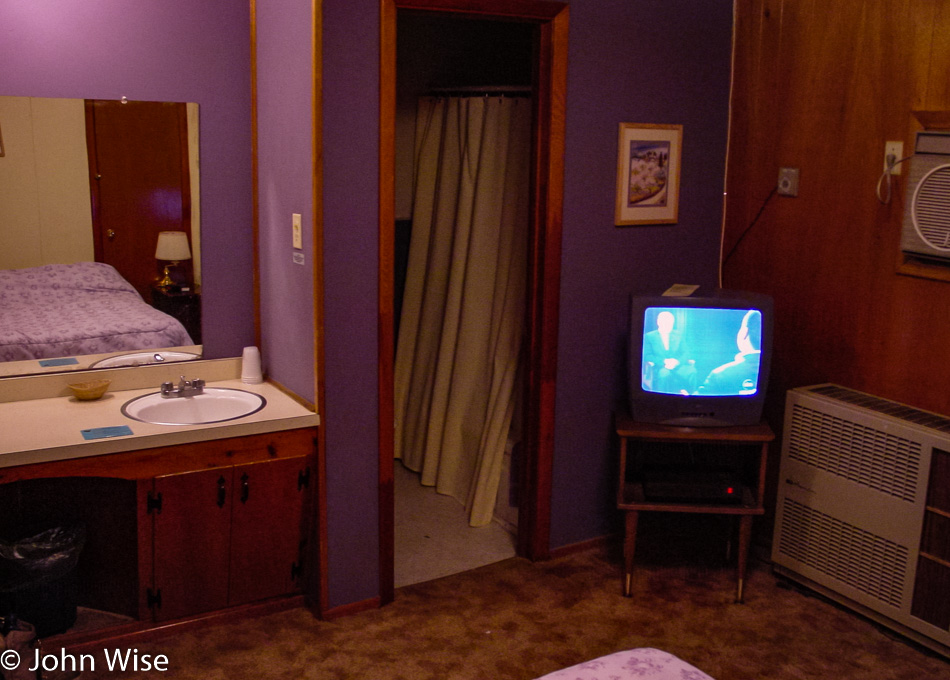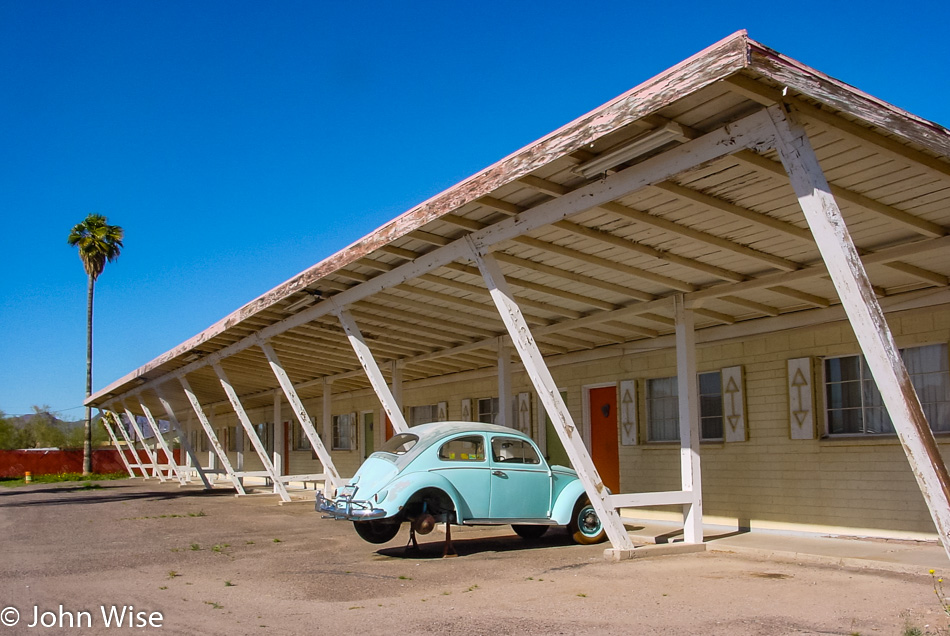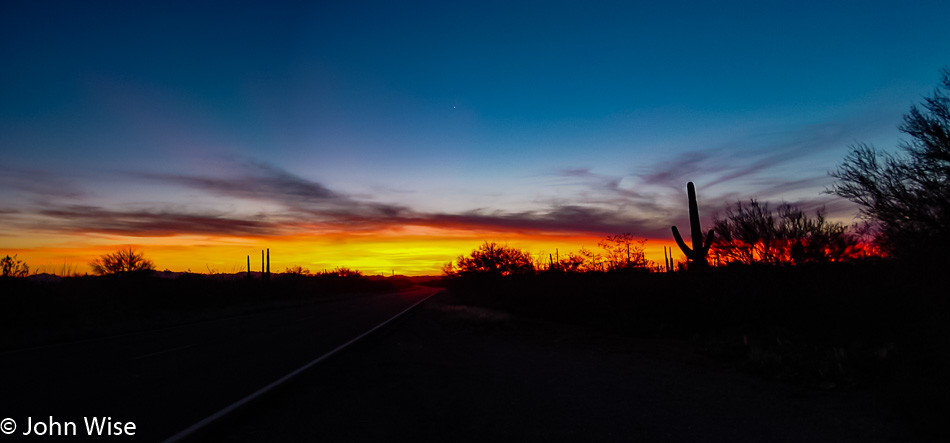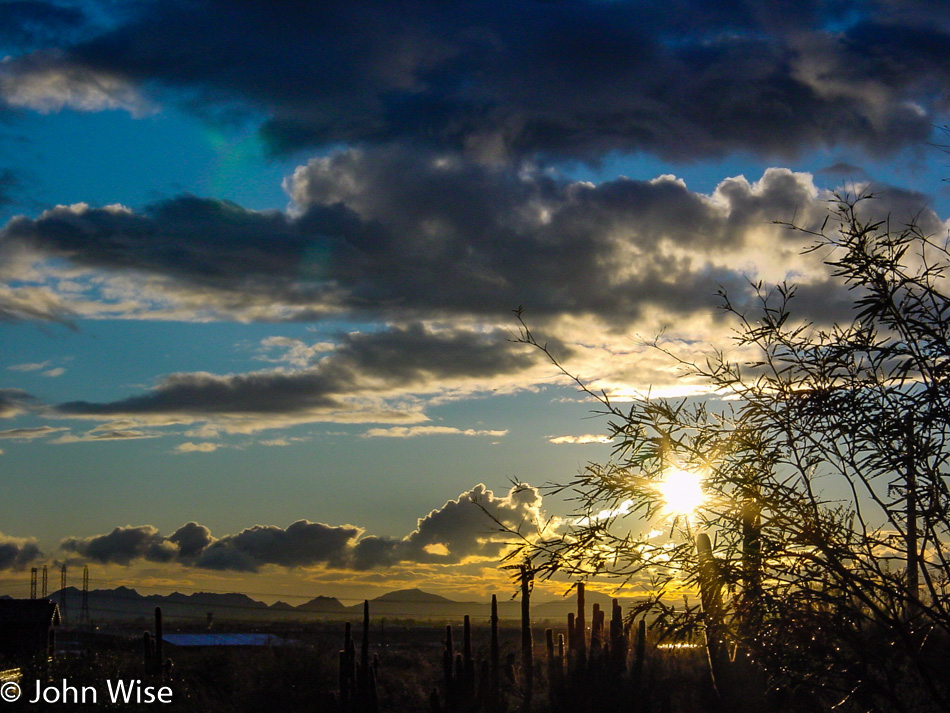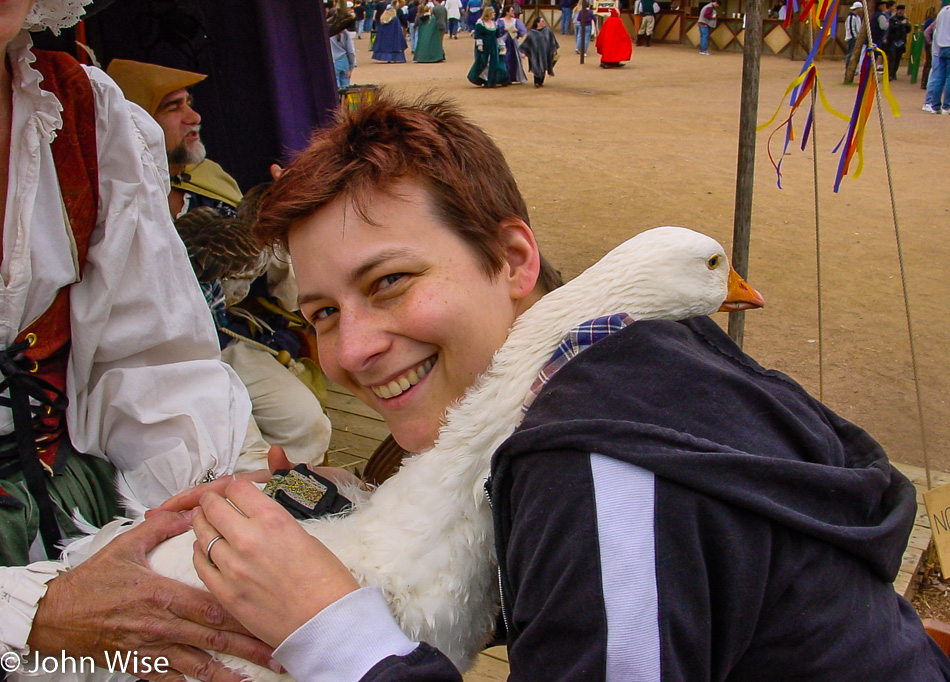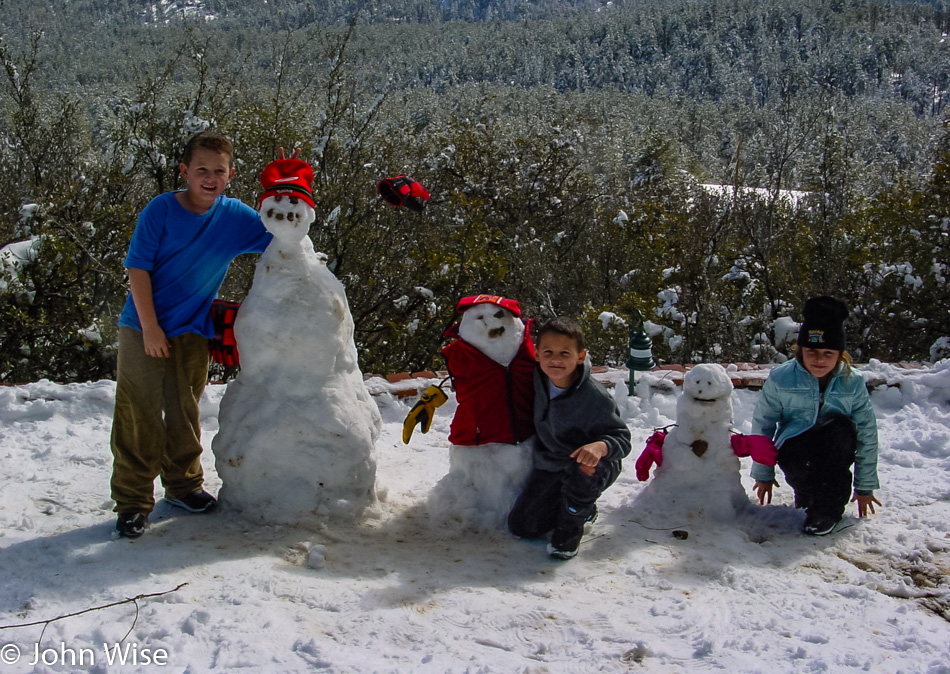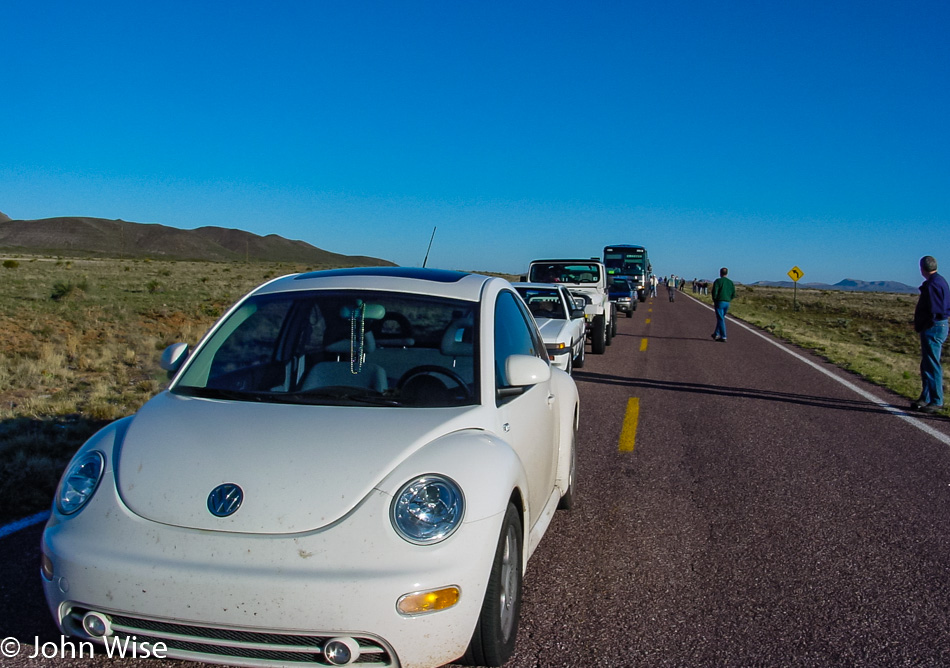
We are just outside of Socorro, and this is the line waiting to enter Trinity Site in New Mexico on the White Sands Missile Range. Visitors are welcomed just two days a year: The first Saturday in April and the first Saturday in October. Gates open at 8:00 a.m. and close at 2:00 p.m. We arrived early at 6:30, thinking we might be first in line – wrong! We are about 30 cars back. Who knew so many people would be interested in visiting the home of the first nuclear blast?
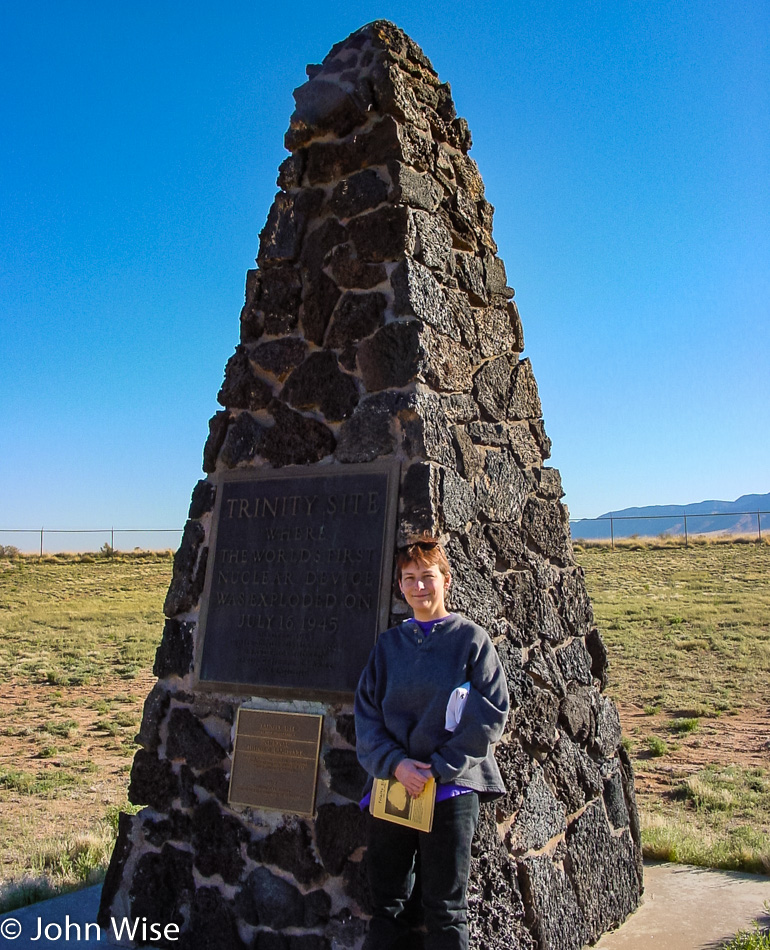
We are at ground zero of the “World’s First Nuclear Device Explosion.”
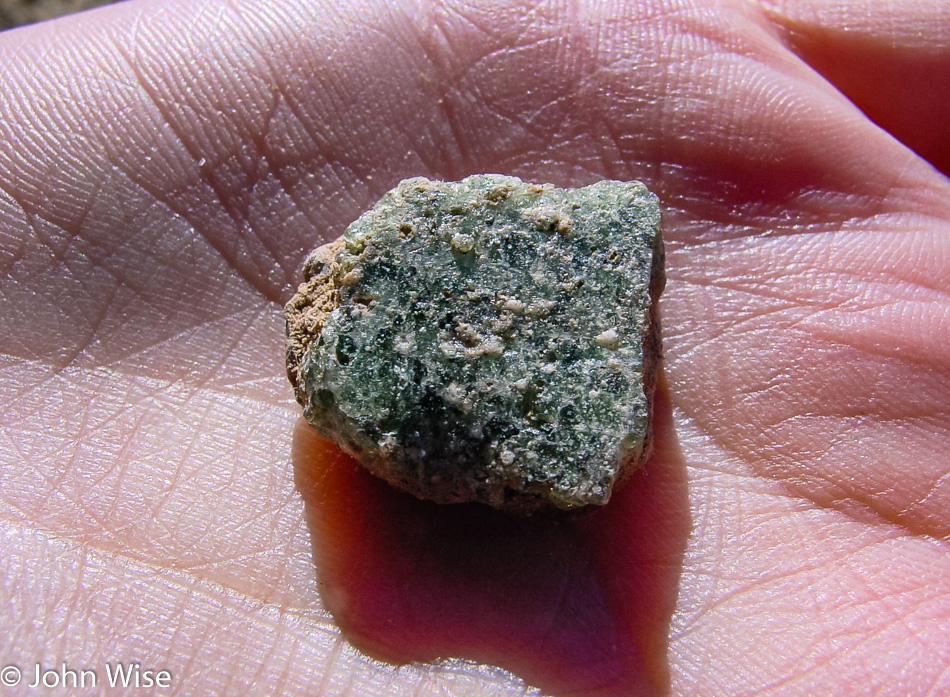
This is trinitite, and it was formed on the desert floor after the plutonium-based Trinity nuclear bomb test on July 16, 1945, here turned the desert into glass. This stuff was lying around everywhere during our visit (you are not supposed to take it, but it can be found in souvenir shops in the region). Our visit here on the White Sands Missile Range was intriguing as we drove through an area that is restricted to outsiders at all other times of the year. We were also able to visit the old houses where those conducting the test and observers were positioned back on that historic day.
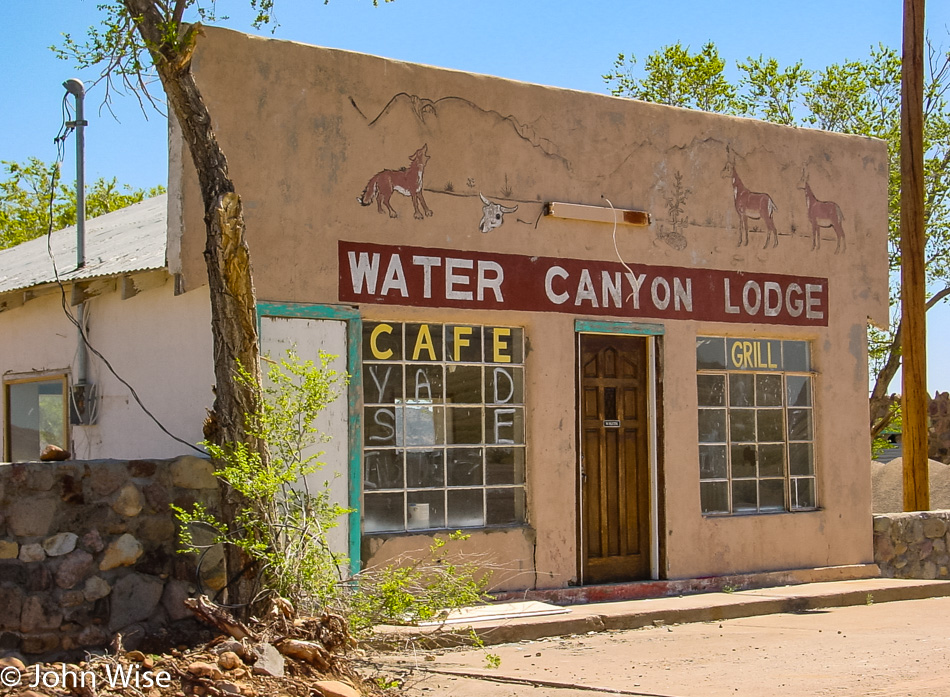
We are on the way home now and never had the chance to eat here. If it were still open, this looks exactly like the place we’d like to stop in.
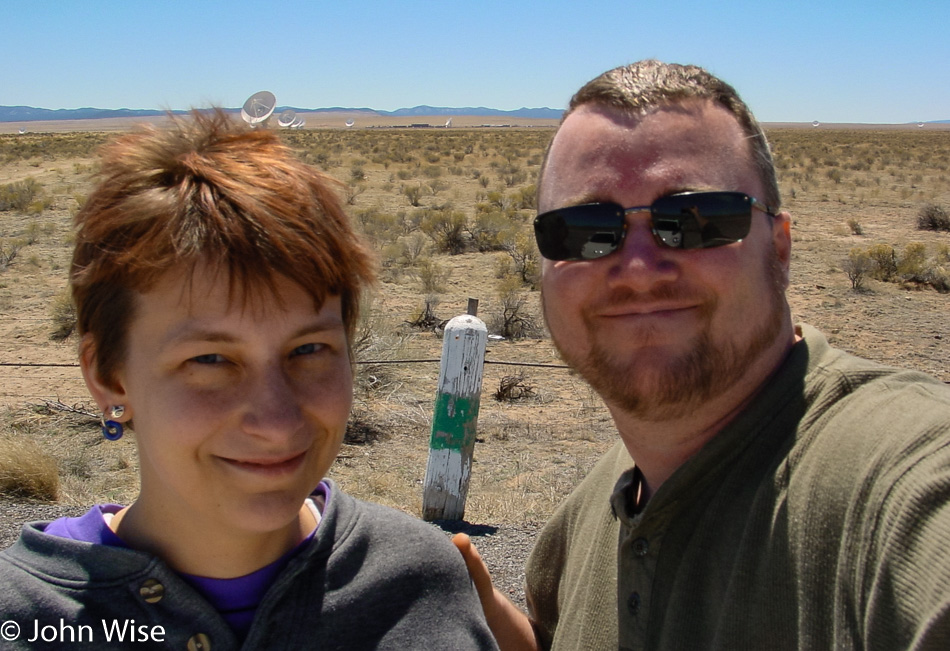
We are near the VLA, also known as the Very Large Array, which is outside Datil, New Mexico.
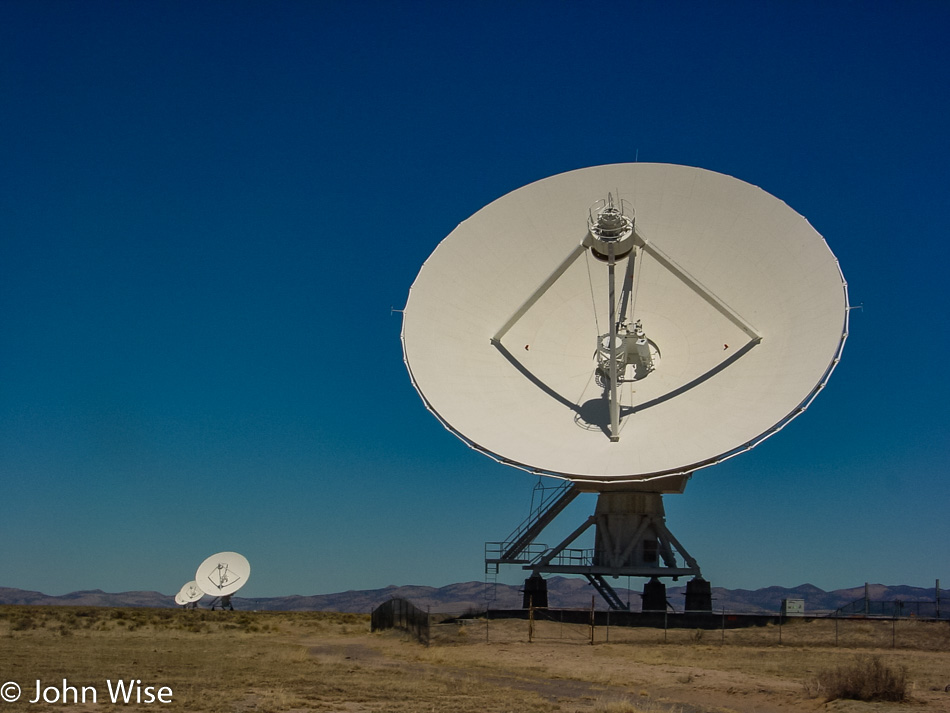
While we didn’t have time for a proper visit this trip through the area, we made a note to return. You might recognize the dishes as they played a role in Jody Foster’s movie Contact.
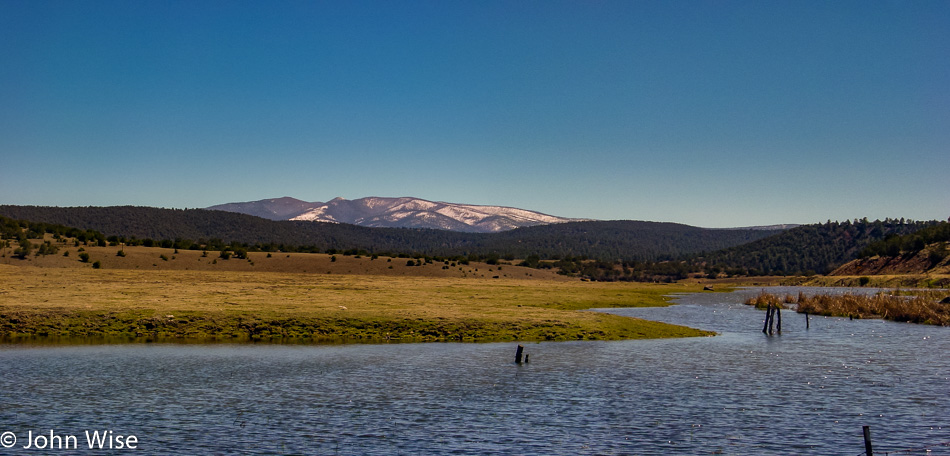
It’s nice to be out in the mountains exploring New Mexico as spring is coming on.
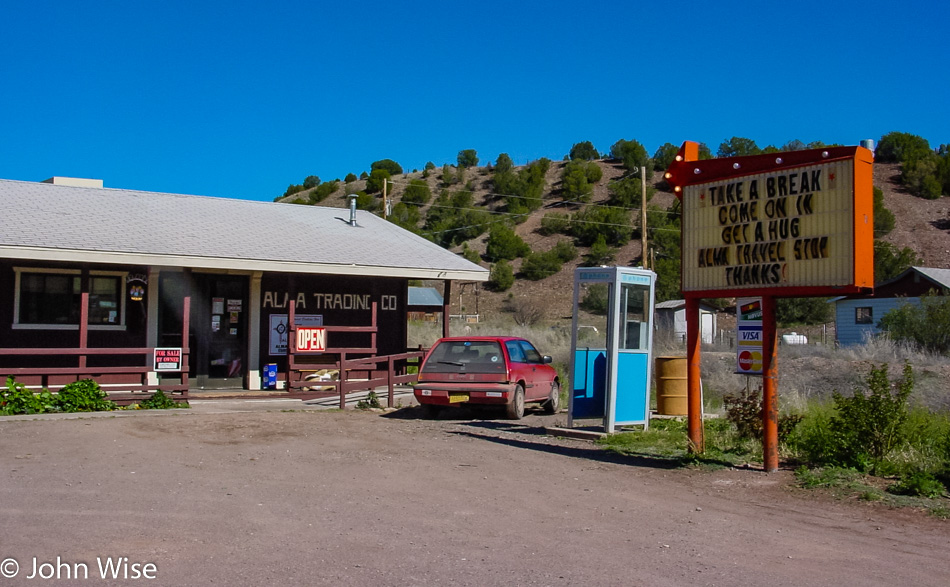
This place, “Alma Trading Company,” was up for sale as we stopped to use the payphone (just kidding).
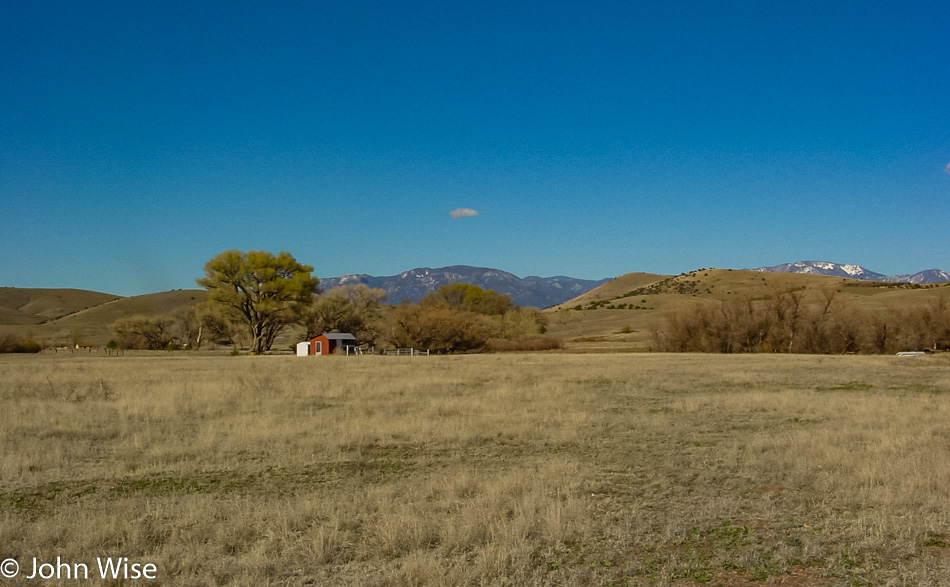
We pass so many areas that beg for us to return on subsequent visits and explore the area, though with so much country left to find I’d bet a dollar our next visit might be some time.
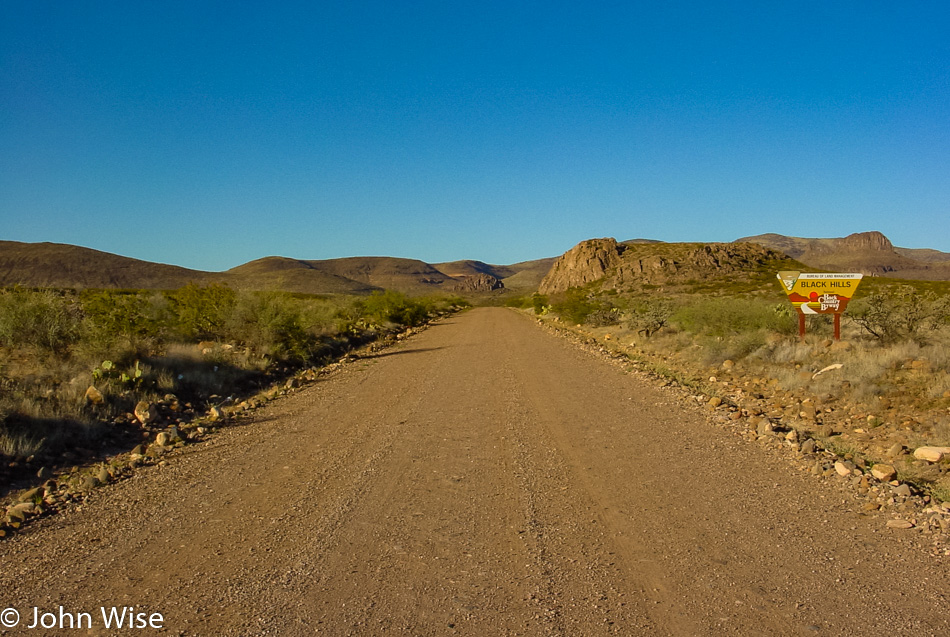
While we have to skip this 21-mile scenic byway, this time we take a photo to remind ourselves that the road ahead looked interesting enough that someday we’d like to travel this well-maintained gravel road. By the way, this is back in Arizona.
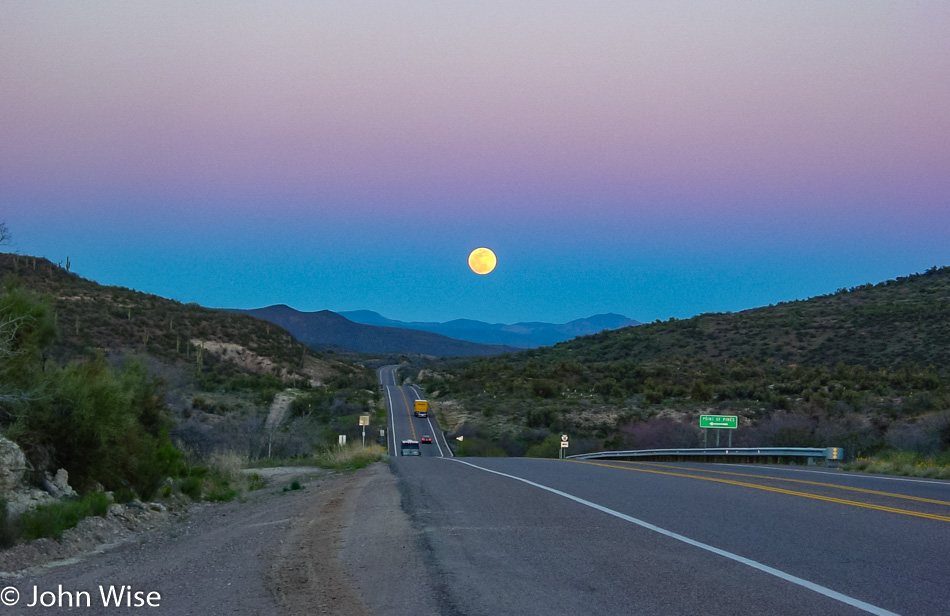
I had to pull over for this photo after seeing the moon in my rearview mirror here on Highway 60, also known as the Old West Highway, as we were traveling west to get back home to Phoenix.
